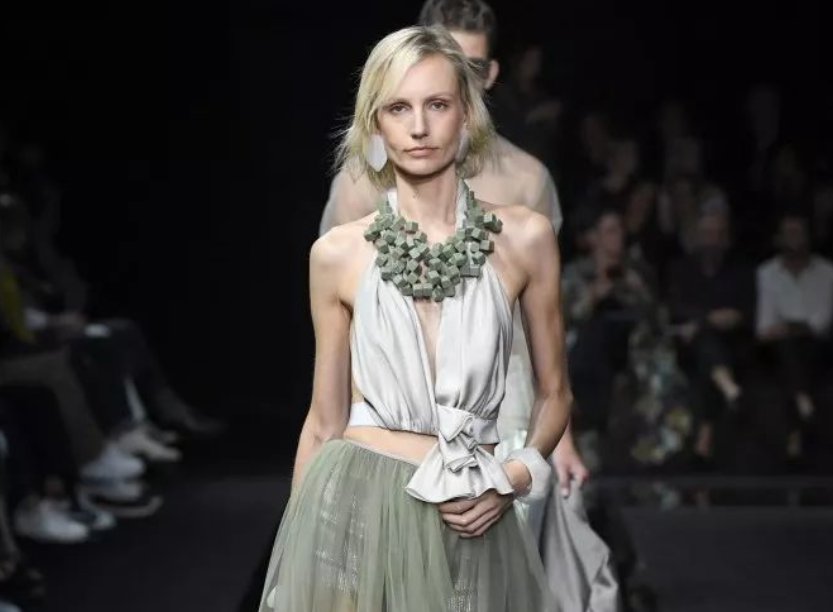
"Power" was undoubtedly the central driving force of the 1980s, it was everywhere, permeating healthy and prosperous stock portfolios, shaping toned bodies, and challenging traditional "glass ceilings."
This decade marches on to the chimes of the New York Stock Exchange, the music of MTV, and the tapping of personal computer keyboards. The fashion industry has also ushered in unprecedented innovation - lycra fabrics cling to the body and outline unprecedented curves, paving the way for the birth of the "power suit".
In a special titled "Power Dressing, "seen through the lens of Helmut Newton, images of women burst onto the page, standing over men in new poses.
They are filling their cars with gas, cleaning their pools and trimming their hedges, displaying unprecedented strength and autonomy. The caption reads: "Look at fashion from another perspective, incorporating elements of entertainment, fantasy and provocation.
Men see women in their own way, and women see men in their own way. Women dominate by dressing to attract attention. Men may inspire fantasy, but it's women who set the direction and tone. You can really feel that The Times are changing."
Women's fashion from the 1980s
Power suit
By the 1980s, the previously popular flexible polyester suits gradually gave way to structured, well-defined styles that sent a clear message that women wanted power and sought a unique style of dress. The women's liberation movement of the 1970s (especially the Equal Credit Opportunity Act of 1974) levelled the playing field for women, the economy was booming, and women wanted to be part of it.
Designers have responded to the call of The Times, with fashion giants such as Claude Montana, Emanuel Ungaro, Tirry Mugler, Jean Paul Gaultier and Yves Saint Laurent offering distinctive power suits.
These suits are as strong as armor, and the shoulders are designed with exaggerated padding to give women a more dignified and powerful look.
The double breasted outline highlights the stature; And the pommel skirt adds momentum to the women, making them stand out in the crowd. The designers' clever use of beading, fabrics and bold colors set this look apart from the traditional men's suit.
They not only show the elegance and charm of women, but also convey women's pursuit of power and independence. The power suit is no longer a tool for crooning femininity; it has become a howl of female power.
The yuppie look took off
Yuppie is an acronym for "young urban professionals" or "young upwardly mobile professionals," a term no one at the time could properly ascribe in a 1980 Chicago magazine article.
The label was divisive almost immediately. Some people resonate with the epithet, while others see it as a sign of pretentiousness and mediocre taste.
At its worst, yuppie even means unthinking gentrification in the name of capitalism.
In the fashion trend of the late eighties, the once popular little yuppie suit, which mimicked men's pinstripe designs and was paired with a doodle-style girly bow tie, did more to make women stereotypical and boring than to display so-called masculine and 'powerful' traits. Thankfully, these are now considered an endangered species in the fashion world.
Meanwhile, another giant of the fashion world, Ralph Lauren, developed a very different style of yuppie.
He dug deep into the unique fashion elements of the American Southwest and perfectly integrated them with the tradition of the English gentleman, thus giving the traditional college American style a new vitality and level.
If the style of the little yuppie lacks innovation and imagination, then Ralph Lauren's preppy style is driven by dreams and iconic polo shirts, showing a different style and charm.

